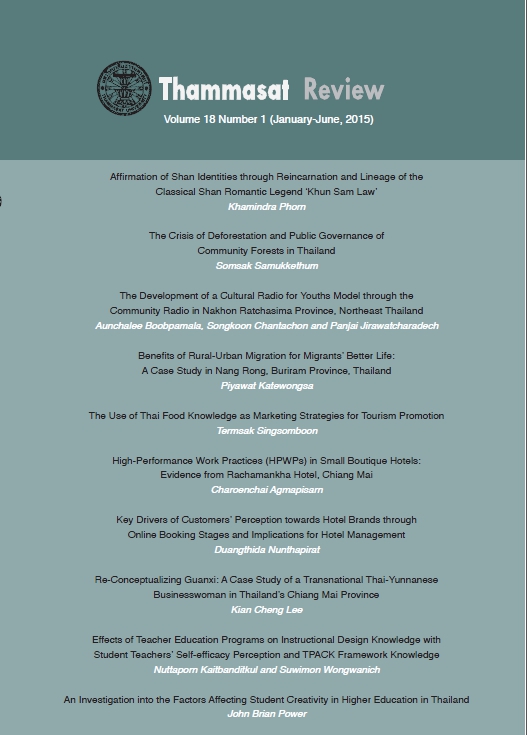Benefits of Rural-Urban Migration for Migrants’ Better Life: A Case Study in Nang Rong, Buriram Province, Thailand
Abstract
Rural-to-urban migration is a major pattern of population movement in
Thailand. The aims of this movement are significantly related to various dimensions
of the migrants’ well-being, such as better education, job opportunities, health
facilities, standard of living, and wages (Van Landingham, 2003). This study explores
the benefits of rural-to-urban migration by examining Nang Rong District, Buriram
Province, as a case study. The changes in the migrant’s life, including income, savings,
housing, living condition, working hours and social networks, were assessed as
indicators of a better life.
The study employed data from a longitudinal study entitled “Demographic
Responses to a Changing Environment in Nang Rong: 1984-2000,”, with 2,270
cases observed as the units of analysis. Unlike a cross-sectional study, which records
activities at a single-point in time, the subject of a longitudinal study is observed over
a period of time, sometimes years. Results indicated that rural-urban migration was
able to meet migrants’ expectation for a better life at a level of 40.3 percent, overall.
More than half of the migrants failed to meet the criteria of a better life standard.
Nevertheless, if considering that the main purpose of migration was to gain higher
income, the vast majority (84.2 percent) accomplished their goal. The most influential
determinants on migrants’ better life are moving cohort, years in education, marital
status and social network. For these reasons, well-managed migration can help
maximize potential benefits and reduce the risks when people move. People who
desire to migrate from a rural to an urban area for a better quality of life, should
first assess the current economic situation, social networks, couple support and their
individual characteristics, especially age and education. A favorable combination
of these supportive components could help migrants achieve their expectation of
improved life conditions.
Downloads
How to Cite
Issue
Section
License
The opinions and ideas expressed in all submissions published in Thammasat Review are solely that of the author(s) and do not necessarily reflect that of the editors or the editorial board.
The copyright of all articles including all written content and illustrations belong to Thammasat Review. Any individuals or organisation wishing to publish, reproduce and distribute a particular manuscript must seek permission from the journal first.








